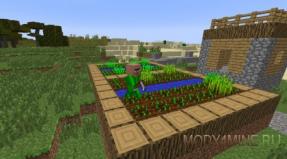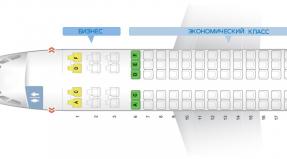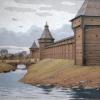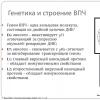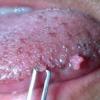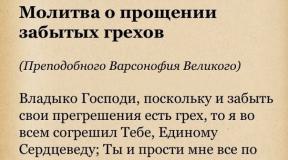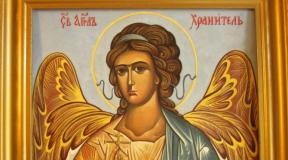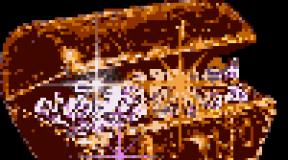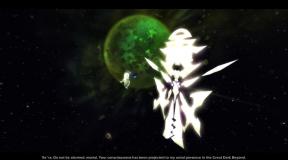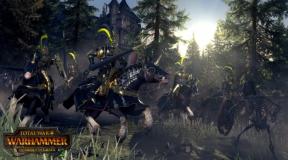Russian aviation. Superjet Myths Superjet Sukhoi 100 Produces
Foreign components make up a significant share in the production of the Russian Sukhoi Superjet 100 aircraft. According to Life, it is the problems with their deliveries that can seriously complicate the Sukhoi Civil Aircraft JSC (hereinafter - SCAC JSC) fulfillment of contractual obligations to customers.
So, through cooperation with the French PowerJet faces serious risks in the supply of engines to aircraft. They are associated with a disruption in the supply of components in the Snecma chain - " Saturn ", which threaten to disrupt the deadline for aircraft production in 2017," says a source to Life in the Ministry of Industry and Trade.
In addition, according to him, from another supplier - a French companySafran Landing System - "There is difficulty in vendor loyalty to keep the SSJ 100 competitive in its cost-cutting program."
To put it simply, the official explains, the French are insisting on an increase in the price of the landing gear system for the serial production of SSJ 100 aircraft, while JSC "Sukhoi Civil Aircraft", on the contrary, seeks to reduce costs with all suppliers. A source in the Russian company also speaks about the potential problems that the SCAC may face.
SaM146 engine, produced by the Russian NPO Saturn together with the French company Snecma (Safran group), it is used as a universal power plant for the Sukhoi Superjet 100 family of regional aircraft. To manage the SaM146 engine program, Snecma Moteurs (Safran group) and NPO Saturn, on an equal footing, established a joint venture PowerJet.
Safran is responsible for the "hot end" of the SaM146 turbojet (the gas generator comprising the high pressure compressor, combustion chamber and high pressure turbine, as well as the control system, gearbox, nacelle). "UEC-Saturn" is responsible for the "cold" part - the fan and the low pressure turbine, as well as for the general assembly and installation on the airframe.
The manufacturer of SSJ 100 - Sukhoi Civil Aircraft JSC (SCAC, part of the United Aircraft Corporation - UAC) - has been supplied with 250 engines, the plan for 2017 is more than 70 SaM146. The Volgaero joint venture, which produces engine parts, created by Snecma and PJSC NPO Saturn, is now operating in Rybinsk. The SaM146 is the only domestic engine certified according to the requirements of the European Agency for the Safety of Air Transportation (EASA).
Now SSJ 100 aircraft have a fairly high proportion of French "stuffing". In addition to the companies already mentioned, the suppliers include: THALES Avionics (avionics), Zodiac Aero Electric (windshield cleaning system, cockpit consoles, service consoles and plugs, external lighting, cockpit lighting), Zodiac Aerotechnics (fuel system, development work on the oxygen system of the crew and portable equipment ), Le Bozec Filtration and Systems SA (system for supplying water-repellent liquid to windshields), LEACH (load control unit, button lamps), ELTA (emergency radio beacon), Michelin Aircraft Tire (aviation tires), Aerazur (children's life jackets), Artus Pacific Scientific (power supply system) and others.
The Russian side does not like this dependence on foreign components very much, but so far it cannot do anything.
In general, the program of cooperation with French partners is being implemented routinely. However, some points cause concern on the Russian side, - says an official of the Ministry of Industry and Trade, referring to the risks of disruption of supplies from partners and their desire to increase the price of parts.
So far, no understanding has been found on controversial issues, ”he clarifies.
In June, Kommersant reported that PowerJet is considering localizing additional production in Russia. This was announced by the president of the joint venture Marc Sorel at the Le Bourget air show.
And in March, at the first meeting of the Aviation Board, the head of the UEC, Alexander Artyukhov, said that the corporation "faces the task of increasing the level of localization of engine production in the Russian Federation", at the first stage - with an increase in the degree of localization to 55%, at the second stage - up to 80%. At the same time, according to Sorel, the joint venture "is ready to consider the possibility of partial localization in the Russian Federation of the" hot part "" by organizing the foundry of individual parts. Negotiations on this between the UEC and PowerJet took place at the Le Bourget air show.
The French are still twisting our arms for the simple reason that they can afford it. They understand that such a high proportion of their components allows them to insist on raising prices, and they will do their best to delay the localization processes, because this will reduce their influence, explains a source in the SCAC.
The pride of the Russian aircraft industry, an innovative development on which the government has great plans - all this is about the model of the modern Sukhoi Supredjet-100 aircraft.
Despite the fact that the model has a number of shortcomings, it is the next step in the development of domestic passenger transportation over short distances.
Subject to responsible development and improvements, it has every reason to receive the title of the best in its class.
History of creation
The beginning of work on the creation of a prototype of the first "Superjet" was after the victory of the PRJ project in the competition for a license for development.
In February 2006. the company started assembling the first SSJ model, and exactly 1 year later the model was delivered from Komsomolsk-on-Amur to the Zhukovsky landfill for the purpose of presentation and carrying out a control static test.
In February 2008, the first test of the power plant's performance and its compatibility with other systems was carried out. After another 2 months, the Sukhoi Superjet-100 was tested on the runway.
The model passed the travel and steering test successfully.
In the fall of this year, the SSJ-100 underwent a certification test at the Interstate Aviation Committee and passed endurance tests.
On 24.12.2008 under the control of test pilot L. Chikunov and N. Pushenko, the airliner took to the air for more than 2 hours. The height to which the model climbed reached 6 km.
The results of TsAGI inspections were obtained in 2010, as a result of which CJSC "received a license to manufacture this modification. On April 19, the first prototype was presented to the Armenian air carrier "Armavia", which successfully operates it for its own needs.
Design
The turbofan power unit SaM146 of the Russian-French company Power Jet, installed on both sides of the case, ensures the flawless operation of the model. The plan of the Sukhoi Superjet aircraft does not differ in any way from the standard classical norms of aerodynamics, representing an ordinary short-haul passenger ship.
The swept-like shape of the wings, equipped with flaps with one slit, the nose cone, many mechanisms and parts are all made of composite materials.
The airliner is controlled using a side stick installed instead of the steering wheel, which is used for the first time in domestic developments.
Mechanical shock absorbers for landing safety are not installed, since instead the designers used automatic protection against touching the tail of the landing strip.
Interior layout
The manufacturer comments on the layout of the cabin with the following words: “The seats in our Sukhoi Superjet-100 aircraft are designed in such a way that the greatest comfort and safety, created by unprecedented characteristics, are in the foreground. Thus, a passenger who has arrived on a large airliner for long-haul flights and transferred to a small regional one will hardly feel the difference.

The design of the economy class cabin is identical in size to a Boeing or Airbus. The distance in the legs allows you to calmly sit down and straighten your legs even for tall people, and the shelf for storing luggage for 50 liters even breaks all records.
In addition, this is an advantage due to the fact that there is no need to check in a bag or suitcase and then wait for it to be received on arrival. "
The arrangement of seats on the Sukhoi Superjet aircraft is designed in such a way that there are 2 categories: economy and business class.
The inexpensive salon has 75 seats against 12 in the more expensive class.
Separately, mention should be made of the arrangement of the seats, they are placed in such a way that there are 3 pieces in one row on one side along the side, 2 across the passage on the second side. Toilets are located in the front and rear.
Location of the best places
The total capacity of the cabin can vary significantly depending on the seat selected. The most comfortable ones in economy class are in the 6th row. There is more legroom here as there are no seats in front.
The rest are considered relatively convenient, differing in many respects from their "classmates" used in regional aviation. The distance between adjacent seats is 81 cm.

The opposite situation applies to the last row, the partition installed at the back does not allow the backrest to be fully reclined and positioned with maximum comfort.
In addition, the structure of the aircraft cabin has some peculiarities concerning almost all places in any public transport. Therefore, it is advisable to take them into account when choosing a place:
- The seats located near the porthole are distinguished by the fact that during the entire flight you can admire the opening views (subject to a daytime flight and clear weather). However, getting out of it is inconvenient, you have to disturb the next passenger;
- The seats installed next to the aisle have completely opposite characteristics. It is easy to go to the toilet from them, you do not need to ask anyone to let you in. But, quite often, passing flight attendants, delivering food and water on carts, as well as passengers and a neighbor who needs to get out, can be disturbed.
General specifications
One of the main differences that Sukhoi Superjet-100 has is production using modern technologies and innovative projects.
Due to this, some technical characteristics are fundamentally different from analogs produced earlier.
You can familiarize yourself with them using the table below:
| Characteristic | Value / Description |
|---|---|
| Length, m | 29,95 |
| Height, m | 10,29 |
| Wingspan, m | 27,85 |
| Fuselage diameter, m | 3,25 |
| Maximum takeoff weight, kg | 45 890 |
| Maximum landing weight, kg | 40 000 |
| Empty aircraft weight, kg | 24 240 |
| Optimal speed, km / h | 820 |
| Maximum speed, km / h | 870 |
| Flight altitude, m | 12 100 |
| Flight range, km | 3 050 |
| Number of passengers, people | 98 |
| Run length, m | 1 620 |
| Number of crew, people | 2+2 |
Due to its peculiarities, "weaving" can be operated on runways of all types.
In addition, the avionics of the model allows performing these actions even in difficult meteorological conditions.
In addition, the price of tickets for a small plane is low, which makes it more popular for use in regional flights.
Super Jet-100 family modifications
As of November 2017, 151 Sukhoi Superjet-100 aircraft were produced. However, this applies not only to one model, but to the entire series, developed on a single basis.

In total, at the moment, 7 different variations are known, intended for various purposes:
- Airplane "Sukhoi Superjet-100 V" - the standard version, from which the history of the model began;
- Model 100 B-VIP is an administrative and business version developed on the basis of the basic model. At this time, 2 aircraft are operated in the Rossiya SLO and 1 in the RusJet airline;
- 100 LR (Long Range) - has an increased flight range, reaching 4,500 km;
- 100 LR-VIP - administrative and business option with an increased flight distance. Produced 5 units of equipment (2 Ministry of Emergency Situations, 2 Royal Courtyard of Thailand, 1 Kazakh branch of a Swiss company);
- 100 SV - the model is under development, the manufacturer undertakes to present a prototype with an enlarged fuselage and more passenger capacity in 2018;
- Sukhoi Business Jet, or SBJ, is intended for flights of important persons. Differs in increased comfort. Interior trim is custom-made. Today the only owner of such a model is the Kazakh Ministry of Emergency Situations;
- Sportjet by Sukhoi is a modification designed to transport athletes, it is planned to start mass production by the start of the 2018 FIFA World Cup.
Of the total number of Superjet aircraft produced, only 117 units were handed over to customers, the rest are in the manufacturer's hangar or are in Zhukovsky for static tests.
Airplane advantages
As mentioned earlier, the Sukhoi Superjet-100 is manufactured using modern technologies, which allows us to speak of its high quality, reliability and safety.
The main structures are designed in such a way that this model is the only one to be certified according to the world standard. In addition, at the time of the development of the aircraft, not only technical requirements were taken into account, but also the wishes and recommendations of future customers.
This made it possible to bring Pavel Sukhoi's designs as close as possible to the ideal option.
Benefits are categorized as passenger-derived and operational, those that affect pilots and service owners. If we consider the positive characteristics of the plane from travelers, the following can be noted:
- Convenient aircraft layout;
- A salon that is characterized by width and spaciousness;
- Conveniently installed soft passenger seats;
- Modern production and use in the production of modern finishing materials.
However, despite numerous positive reviews, the opinion is often heard that the model requires significant improvements. Perhaps this is the reason that most of its time the model is on the ground, and at the time of flights, the cabin is not more than half full.
Disadvantages of an airplane
A serious blow to the brand's image was the tragedy that occurred at the time of the test flight over Indonesia.
The accident killed 45 people, some of whom could become potential customers. Although, as a result of the examination, the cause of the collision with the mountain was not the technical condition of the aircraft, but the erroneous actions of the crew, many have changed their opinion about the Superjet-100, and the manufacturing company has lost a large number of orders.

Most of the list of manufactured aircraft models "100" and "95" have notes regarding frequent problems that arise with enviable consistency. This can be explained by the fact that "Superjet" is a new development, which, like all new items, has technical errors that appear only during long-term operation.
Another option is the Russian assembly. This fact is enough for some customers to refuse a purchase.
If we look at the statistics, the flying time of models does not exceed 3-4 hours a day. The only positive coefficient is shown by the Yakutia airline with an average time of 6.5 hours.
The reason for the low popularity is the high cost of spare parts, the production of which is not profitable for the manufacturer due to the small number of aircraft.
Many passengers notice the Superjet's design feature - the low position of the windows. In order to look in them, an adult has to hunch over or slide down, which is not very convenient. In addition, a number of unpleasant surprises of the model were noted:
- Strong vibration of the floor;
- Poor sound insulation;
- Lack of individual ventilation;
- Poor layout of emergency exits, of which there are very few.
Despite the different dynamics of the advantages and disadvantages of the model, it is a national pride, since this is the only aircraft designed after the collapse of the Soviet Union, while meeting all international requirements. Moreover, despite the description of the "Superjet-100" as a model that has a number of flaws and constantly requires the intervention of technicians, it has no cases that radically characterize the danger of the model.
For the entire short period of use with the aircraft, there was not a single serious breakdown that resulted in the death of people. The case that occurred in Indonesia is not taken into account, as it happened for a different reason.
Video
The Superjet is perhaps one of the most controversial projects in the domestic aviation industry. Hundreds of aviation "specialists", breaking keyboards, discuss it on forums and express their expert opinions. Meanwhile, in Komsomolsk-on-Amur at the KnAF plant, 33 machines are already being assembled. Well, the dog barks, and the caravan moves on.
By the way, aviation "specialists" are invited to comment. My readers and I will be happy to hear your expert opinions on all issues of life, the universe and everything else.
It is worth noting here that mastering new technology is always associated with certain difficulties. The aircraft still has childhood illnesses, which the SCAC (Sukhoi Civil Aircraft) promptly eliminates and brings the aircraft under construction and in operation to the desired condition. By the way, all the sides of that same Dreamliner are on the ground at least until summer due to problems with batteries. And the A320's commercial success story didn't start very smoothly either.
So I'm sure that Sukhoi is still ahead. The main thing is that the people I talked to love this car. They love to fly on it, service and bring to mind. They build airplanes, unlike other design bureaus, where they are only proud of the fact that they once built airplanes ...
Let's fast forward to the Far East and take a look at the production of the SSJ100.
1. The assembly of the finished product is divided into nine sections, where certain assembly operations take place. Six sites are located in the final assembly (DSP) of the aircraft, and three more were added at the expense of the former "Malyarnaya". In this panorama, you can see sections of the DSP from the second to the sixth. The first is not visible, he hid behind the central plane. The final assembly shop is a place where thousands of future aircraft parts are combined into a single whole to become a beautiful iron bird, stuffed with electronics and state-of-the-art systems.
. :: clickable ::.
2. But it all starts here - in the first section. On the fuselage, which was brought already assembled from the fuselage assembly shop, doors are hung, a stabilizer and a keel are mounted.

3. But assembling the structure of an airplane is not even half the battle - it’s just the simplest thing. And then a very difficult and responsible work begins on the wiring of the harnesses and the installation of the electrical network of the future machine.

4. Laying of harnesses of the remote control system is carried out taking into account threefold redundancy, and power wires - by separate routes, taking into account the redundancy of sources of the 1st category.

5. Work is carried out in three shifts - around the clock, and there are about 300 key workers per shift.

6. The center section of the aircraft. In the second section, detachable parts of the wing (OCHK) will be docked to it. And in the very center section there is one of the fuel tanks. Two more are in the wing consoles. The total fuel supply for the two versions of the aircraft (B - base and LR - extended range) is 12,690 kilograms.

7. By the way, over the past 25 years, 74 Tu-204 aircraft and 24 Il-96 aircraft have been produced, respectively. Since 2008, the SCAC has already produced 25 vehicles, both experimental and serial. Feel the difference.

8. The nose section, as well as the tail section and the stabilizer are manufactured in Novosibirsk. They reach Komsomolsk by the usual road on a trailer. Now one of the main tasks when assembling an aircraft is to relieve the final assembly shop from assembly operations that can be performed at other sites.

9. The main problem of the domestic aircraft industry at all times has been electrical wiring and engines. Here, it seems, they managed to be solved. Even looking at the restoration of the Il-14, I was amazed at the complexity of the wiring in this relatively simple aircraft. And on the Superjet, which, in fact, is a flying computer, there are much more harnesses and wires by a strong order of magnitude. The total length of the entire electrical network is ten kilometers. And the process of its installation is very laborious and time-consuming, which then requires careful and scrupulous checks. Traditionally, earlier (for example, on the Tu-154), after laying the harness, the connectors were manually sealed, called and labeled. It's a hell of a job. And, as usual, girls are busy in such monotonous and responsible jobs.

10. Therefore, great forces are now being thrown into the modernization of the cable network. A harness is a bundle of wires from two to several tens or hundreds of conductors. Usually one or more connectors are located at one end, and then the bundle branches out to connect to different devices and systems. And before, at best, only the connectors on one side of the harness were sealed. On the Superjet, in the process of mastering production, it was possible to reduce the number of connectors embedded in the DSP from 1500 to 900. And this is not the limit. Again, as part of the main task of unloading the DSP, work is underway to transfer part of the installation of electrical wiring to other sites. Significant work has been carried out to introduce a new cable network, which will allow avoiding a large amount of manipulations for terminating connectors on board the aircraft. Now, during assembly, parts of the fuselage with a ready-made network will be delivered to the shop. And the rest of the wiring will be assembled using prefabricated harnesses.

11. Sealing of vertical tail seams. It is manufactured in Novosibirsk, but without part of the system elements (hydraulic pipelines and drives, electric cables, etc.). Therefore, after the installation of systems in the DSP, in some places of this tail, sealing is required.

12. In the second section, the fuselage is docked with the wings - a special system sets and fixes them relative to each other, providing the necessary sweep and transverse V (the angle between the plane of the wing chords and the transverse axis of the aircraft, when viewed from the front).

13. Car with number 95036 is being assembled for the Mexican airline Interjet. On it, the installation of electrical harnesses was carried out already during the assembly of the fuselage, which made it possible to further unload the DSP and reduce the time spent by each machine on the site.

14. The main supports can have one of two designs: a four-wheeled cart or two-wheeled. The choice of the type of the main support is determined by the Customer. The hinge assemblies of various supports are unified, and the choice of the size of the chassis niche is based on the need to place any support in it.

15. Connection of the wing with the center section. Connection holes are drilled and sealed in place after all parts have been spatially aligned. Since the joint between the wing consoles and the center section is a particularly critical connection, drilling and final cutting of the wing and center section structural elements at the junction is performed in the DSP. In this case, the connection is bolted. Here, the center section caisson tank and OCHK are tested for tightness.

16. Installation of flaps.

17. Third section. Electrical work is being completed here.

18. At that time, there were nine aircraft in production, which were assembled for Interjet (Mexico) (one of the aircraft was transferred to LIS, its first flight took place on March 24, 2013), Gazpromavia (LR version), Sky Aviation (Indonesia), Aeroflot , Lao Central (Laos). Three of them were in the former "paint brushes", one of which was rolled out with us for the next test flight, but more on that later. In the photo of the DSP, the farthest left side is one of the first production aircraft, which has now been returned from storage and is being remade to show the interior of the business version of the aircraft - Sukhoi Business Jet (SBJ). This aircraft is in the fourth section, where the pressurized cabin, after the installation of the SCV, is being tested for tightness.

19. Initially, the tact (the aircraft was on the site) was 30 days.

20. Now it is 15, and by the end of the year the cycle is planned to be reduced to 10 days, which will allow the production of about 30 aircraft this year. And next year the cycle will be even less, which will allow to reach the production of 60 aircraft per year in the future. Difficult but real.
. :: clickable ::.
21. Fifth section. The plane is almost ready here. The installation of avionics and onboard systems is nearing completion. The hydraulic system is being checked.

22. Decrease in tact is due to the introduction of new technologies, staff motivation, changes in work technology and its optimization.

23. The engine pylon is a titanium box. It turned out to be very lightweight, compact and with a minimum amount of parts.

24. The finished electrical wiring of the aircraft and its heart - the autopilot and on-board computer blocks. The aircraft is certified as Protected Aircraft. Aircraft of the A320, A330, A340, A380 and Dassault Falcon 7X families have similar certificates. This means that the Superjet control system monitors the actions of the pilots and does not allow them to enter unacceptable flight modes. Moreover, at the moment, among the models produced, this aircraft has the most sophisticated EDSU system (fly-by-wire control system).

25. To provide electricity and pressure in hydraulic systems in the event of engine failure, a wind generator is provided, which is automatically released into the air flow and supplies the required current to the control system.

26. Cars leave the workshop with such a salon. Then the board flies to Ulyanovsk, Venice or the Czech Republic (depending on the customer's wishes) to install the interior and paint the aircraft in the corporate colors of the customer airline.

27. The front of the cab near the entrance doors. In general, I was amazed that absolutely all connectors are equipped with caps and packed in bags before connection. And, perhaps, of all the industries where I have ever been, this is one of the most beautiful.

28. The cockpit during the installation of avionics.

29. The avionics are manufactured by the French company Thales, which also makes them for Airbus.

30. Incredibly beautiful red cases on Ore. And the green surface on the dashboard is a protective film.

31. Technical protection against unauthorized opening of the window for the period of final assembly. Cheerful people work for KnAF - they strengthened it with a castle :) Well, do you remember Mimino? :)

32. The main thing when assembling an aircraft is to withstand the clock cycles. All operations are strictly standardized, and much depends on the suppliers of components. Establishing work with them, bringing all the spare parts and delivering them to the workplace on time is another art!

33. The uniqueness of the Sukhoi Superjet 100 is that, for the first time in the world, a digital fly-by-wire control system was created for an aircraft of this class without a heavy mechanical emergency system. Abroad, only one aircraft has the same control system - the A380. Ailerons and elevators are driven by two electrohydraulic drives (in the photo, just the elevator drive), where each of them operates from different hydraulic systems. One of the drives is always active and the other is passive. The roles are reversed every time the aircraft is powered up.

34. Tail doors and sealed frame. On the right, near the bulkhead, there is an emergency recorder. This is the sixth site.

35. Part of the air conditioning system.

36. Studying the documentation, I came across a neutral gas system. It turns out that it is designed to prevent the formation of flammable fuel vapors in the tanks by reducing the oxygen content in them and pressurizing them with nitrogen, which is released from the outside air using a membrane separator. Such a system has been installed on domestic aircraft for the first time, and it reveals the military past of an aircraft manufacturer: Sukhoi also designs military vehicles - there the system for pressurizing tanks with nitrogen has long been used on fighters.

37. Installation of the radar. Starting from the vehicle with the manufacturer's serial number 95025 (Full version for Aeroflot), the SSJ100 locator will show wind shear.

38. At the sixth section, the engines are mounted and the aircraft is powered. In winter, the next board is placed on this section only after it has been filled with kerosene and the tanks have been checked for cleanliness. Then the aircraft is weighed after refueling and draining the fuel, calculating the non-draining residue. If everything is normal, then motors and APU are de-mothballed.

39. According to the SCAC test pilots, the SaM146 engine showed amazing reliability in operation. In April 2012, on a scheduled flight, while approaching Sheremetyevo, the plane collided with a migratory goose. A goose (not like pigeons and other small birds) got into the left engine. The blow fell on the fan stage of the low pressure compressor. She unrolled it (the goose) and knocked it out through the cold circuit. At the same time, the ends of several blades of the fan stage were slightly bent, and the engine itself continued to work without comment. On another flight, one engine caught three gulls, and the second, almost immediately, two. The power plant survived this too.

40. All assembly work at the DSP is almost complete. The sixth section passes the baton to the first, where they are just beginning to assemble a new board. And the graduate goes to the acceptance and check of all systems.


42. At the moment, ten cars are in operation at Aeroflot, 2 cars at Yakutia. One at the Indonesian airline Sky Aviation, and another at the Lao Central.


44. Long-range aircraft SSJ 100LR. The prototype (95032) made its first flight on February 12, 2013. And this is a production model (92033) which will be supplied by Gazpromavia.

45. There is another aircraft in the hangar for the Mexican Interjet. This one, with serial number 95028, first flew on March 24, 2013.

46. Panorama of the former paint shop, which was recently re-equipped for the tasks of DSP. In the center is the 95025, the full version for Aeroflot. About its rollout and some interesting details in the next post.
. :: clickable ::.
47. Many thanks to all SCAC employees for their openness and willingness to share information about the aircraft. Special thanks to Marina Motornaya, head of the SCAC press service, for organizing this wonderful trip.

Links for self-study.
Official site of the project.
Reality versus speculation - A site that has been created and maintained by enthusiasts. Everything you wanted to know about the plane, but there was no one to ask. It is a pity that some journalists do not drop in here and write all kinds of nonsense in their cozy publications.
Lukomorye about the Superjet - lucidly and in simple language about the aircraft as a whole and in general.
The first myth - motors are vacuum cleaners.
History of the myth
Opponents of the SSJ100 project made statements about the impossibility of operating the Superjet 100 in connection with the engines located under the wing, for example:
“Due to the low-mounted engines, the aircraft, according to the conclusion of the Ministry of Transport of Russia and the results of the TsAGI study, requires additional measures to ensure the safety of its operation at regional airports in Russia. The position of the Central Research Institute of Civil Aviation is even tougher - no more than 5% (!) Of airports in our country are capable of taking SSJ 100 ... Additional measures may be different. From washing the lanes and taxiways in front of each "super-aircraft" along its entire "earth" path (which is hardly possible) to raising the engines up, that is, making changes to the design of the aircraft itself. "
Theory
From the point of view of the layman, the height of the engine is the only thing that determines the likelihood of foreign objects entering the engine. Experts have a different opinion:
Mostly the ingress of foreign objects and particles into the gas-air path of the compressor occurs:
- during taxiing, takeoff run and run from under the front and main wheels of the chassis;
- from under the jets of gases with late closing of the reverse thrust flaps when the aircraft is landing;
- when the engine is stationary due to the appearance of a vortex bundle under the air intake on the runway surface.
Indeed. A vortex cord is a delicate thing, it is destroyed by the wind, or by movement at a speed above 50 km / h. On the other hand, the hard rubber of the tire, which supports tons of airplane weight, throws debris out from under it with the quality of a good catapult. Thus, for the safety of the aircraft, it is not the distance from the air intake to the runway that is more important, but the position of the engine relative to the emission cone of the landing gear.
Design
Naturally, the designers of the GSS knew very well about all these features and took them into account when designing the aircraft. Proof of this is the materials of the draft design, which were safely found on the net. The main conclusion in a nutshell: the RRJ aircraft belongs to irrotational machines, vortex throwing of foreign objects into the engine is not possible.
Clear picture
Practice
The plane, along with its low engines, has been flying for several years. As you know, practice is a criterion of truth, one might even say the only criterion. This means that it is necessary to refer to the experience of those who worked directly with the plane and read the comments of experts.
The aerodynamic design of a turbojet low-wing aircraft with a swept wing and single-fin tail is common to all foreign mainline aircraft operating in Russia. It should be noted that in 2011 foreign aircraft accounted for 89% of the passenger turnover of Russian companies.
56% of Russian mainline aircraft (Boeing 737 and other Airbus 318/319/320/321 etc., as well as SSJ-100
The Boeing 737 is the world's most popular narrow-body jet airliner. Today, one aircraft of this type takes off every 5 seconds, at all latitudes, in operation since 1968. The long-term successful practice of operating this aircraft in Russia has proven the possibility of safe operation of an aircraft with low-engine engines on the runways of Russian airports.
In particular, Yakutia Airlines has 2 Boeing 737-800 units, 3 Boeing 737-700 units, and also ordered two Superjet-100s.
On the other hand, the high arrangement of the engines (1.65m) (performance characteristics of the An-148) on the An-148 short-haul passenger aircraft did not allow to avoid the ingress of foreign objects from the runway, which forced the corresponding improvements:
"According to I. Kravchenko, during the operation of the An-148-100, foreign objects were detected from the runway, but together with the airmen this problem was eliminated, all the measures developed were implemented, and the previously released aircraft were improved." ()
The second myth - drank the budget.
How much does the Superjet cost for the Russian budget?
In the press and on many forums, there is an opinion that "the Superjet-100 program is insanely expensive", wild and false figures in tens of billions of dollars are called. The program is accused of almost the collapse of the entire Russian aircraft industry and "took all the money."
… In practice, we have a stable state support for the SSJ project represented by the SCA / Saturn; even the 204CM project is funded on a leftover basis.
... If, even if the state budget funds spent on the SSZ project were directed, for example, to the development and improvement of the Tu-204/214 project ..., then I think the positive economic effect for the Russian Federation would be much greater ...
The truth is that Superjet-100 received only 5% of all state money allocated for the domestic civil aviation industry. Less than the budget invested in the reconstruction of the Bolshoi or Mariininsky theaters, less than the project for the construction of a train to Pulkovo airport.
The FTP "Civil Aviation Development until 2015" lists all funded projects: SSJ, MS-21, Be-200, Il-96T-300/400, Tu-204/214 / 204SM, Mi-38, Ka-62, and so SaM-146, NK-93, PS-90A-2, PD-14, etc.
The budget for the entire aviation industry under the federal target program 2002-2010 111 billion 808.8 million rubles. (of course, military aviation is not included here)
Budget money for the entire aviation industry 2011-2013: 144 billion 118.2 million rubles.
In total, 255.9 billion rubles were allocated for the development of the civil aviation industry for the period 2002-2013.
The third myth is a screwdriver assembly.
Screwdriver assembly - inapplicability of the term to the Superjet-100.
First, what is a "screwdriver assembly"?
According to Russell R. Miller, Doing Business in Newly Privatized Markets: Global Opportunities and Challenges, this type of production occurs when local suppliers offer components at a higher price or lower quality than foreign suppliers. Therefore, it is more profitable to organize production under a license using a finished product.
In this way, one can single out the main criteria that define the concept of a screwdriver assembly:
- 1. there is no need for product development;
- 2. no need to test prototypes;
- 3. there is no need to carry out certification;
- 4. a set of parts is imported into the country;
- 5. instructions for assembly are imported into the country;
- 6. there is no need for brand promotion - it is already known.
Let's try to understand the criteria point by point:
- 1. the plane was developed in Russia by the GSS company;
- 2. prototypes were tested in Russia by a domestic manufacturer;
- 3. the certification of the product was carried out by the developer of the aircraft, that is, Russia again;
- 4. The set of parts imported into the country is the only point on which the critics of the Superjet program rely, but we will consider this point in more detail below;
- 5. the assembly instructions belong to a Russian company and the aircraft is assembled in that country;
- 6. The Superjet brand did not exist before (unlike Boeing, Airbus or even An and Tu).
Thus, according to five criteria out of six, the Superjet aircraft does not correspond to the concept of "screwdriver assembly".
Why are foreign components needed?
The reason for choosing foreign suppliers is not only in the lower weight or higher reliability of the systems. The main and main criterion is the possibility of certification of components separately, and systems in the airplane - according to EASA / FAA standards. And also the possibility of creating these systems for a reasonable time, money, with a guarantee of quality and price stability. Russian suppliers did not undertake to provide either the first, nor the second, nor the third. And the task was set unambiguous: the possibility of SSJ certification according to international standards. This is one of the basic principles, if you will, the "cornerstones" of this project, without which it would not have been realized.
For this reason, the Superjet's air conditioning system has a leak detection system: it has not been used as part of Russian air conditioning systems, but the same Liebherr has long been familiar with it. And it is impossible to certify an aircraft in Europe without this component. And such "nuances" are present in almost every system. The plane could and would have been praised for choosing domestic suppliers, only for the SSJ itself, market opportunities were very vague.
How much does SSJ consist of imported components?
One of the main claims of critics: Superjet-100 is “not ours,” because it has a large number of foreign components.
"SSJ has 80% of imported components."
So how many foreign components are there in SSJ?
There is no exact information, since an aircraft is a very complex unit and contains a huge number of instruments, sensors, systems, etc. Is it possible to apply the concept of "number of components" in this situation? What if UAC buys a million foreign-made bolts and installs them in a KnAAPO-made Superdet airframe? Then, in relation to a million bolts, one glider is one millionth of a percent. Is this not an indicator of delirium in the minds of those using such comparisons?
But you can make comparisons in the context of finance. How much does the Superjet financially consist of foreign components?
To find out the share of imported components, you need to go to the official website of the SCAC, select "Quarterly reports" and find paragraph 3.2.3 in each of them.
It will turn out:
- In the 3rd quarter of 2011, the share of imports in the supply of materials and goods amounted to 61.5%.
- In the 2nd quarter of 2011, the share of imports in the supply of materials and goods amounted to 53.32%.
- In the 1st quarter of 2011, the share of imports in the supply of materials and goods amounted to 41.1%.
- In 2010, the share of imports in the supply of materials and goods amounted to 53.6%.
- In 2009, the share of imports in the supply of materials and goods amounted to 56.5%.
- In 2008, the share of imports in the supply of materials and goods amounted to 18.2%.
- In 2007, the share of imports in the supply of materials and goods amounted to 55.4%.
As you can see, the share of import supplies fluctuates around 50-60%, the figure of 80% is not and is close.
The number 80% was announced by the deputy Mironov at one of the meetings of the Duma. As to the basis on which he made such conclusions, I can assume that this is the ratio of the number of suppliers of foreign components to domestic ones. That is, 80% of all suppliers of SSJ components are foreign. But such a comparison is analogous to the ratio of a million imported bolts to one domestic airframe.
And how are they?
We are looking at the list of companies involved in the production of the Boeing 787 Dreamliner. (Attention, the site without registration allows you to view 7 pages per month!)
Wherein...
List of companies involved in the production of the Airbus A380 aircraft.
Among the numerous components of the A380, there are also Russian-made parts. In particular, chassis struts, heat exchangers and air conditioning systems. In addition, Russian specialists took part in the development of technical documentation for the A380.
List of companies involved in the production of COMAC ARJ21 aircraft (Chinese competitor SSJ100).
Everything from aluminum to engines, from landing gear to glass, from electrical systems to rivets in the newest Chinese aircraft - Western-made.
List of companies involved in the production of Embraer E-Jets (Brazilian competitor SSJ100).
Against the background of EMB, our superjet is simply super-Russian. Think:
- ALL design and ALL tests (statics, resource, etc.) were carried out in Russia. For Embrayer, this is an import.
- The ENTIRE fuselage and wing of the SSJ are made in Russia. At Embrayer it is import, 4 out of 6 "barrels", wing, plumage - are made abroad.
- Composites for SSJ are made at VASO, at Embrayer everything is imported.
- The metal for the Superjet is Russian, for Embrayer both rivets and metal are imported.
- The design of the Superjet's cockpit was made by a Zhukovskaya firm, and Embrayer has all imports.
- Nizhny Novgorod firms (Gidromash, Heat exchanger, Skat) and Ulyanovsk firms are taking part in the creation of the Superjet, Embrayer has all imports.
- GSS is 75% owned by Russia (through 100% the Russian UAC), while Embrayer is owned by the Brazilian government by 0.3%, and Brazilian bankers by 33%.
However, Embrayer is widely regarded as a Brazilian plane made by a Brazilian firm. What prevents someone from considering the SSJ a Russian aircraft? Probably, either narrow-mindedness, or biasedness, or payment by competitors.
List of companies involved in the production of Mitsubishi MRJ aircraft (Japanese competitor SSJ100).
List of companies involved in the production of the Bombardier CRJ1000 aircraft (Canadian competitor SSJ100).
Airbus, Boeing, Embraer, MRJ and CRJ have the same situation with the units. All aircraft manufacturers put on their liners the best that is on the planet and no one bothers with pseudo-patriotic ideas in the style of “put domestic”. You never know or there are many domestic PKI - it is never important for an aircraft manufacturer, he needs to make an “airplane” product, so that it is not worse than its competitors! And it is not the task of the aircraft manufacturer to raise the entire industry, he will never have enough money or time for this. The task of raising the industry is important, but other structures should be engaged in this, not the design bureau and not the aircraft manufacturer.
Think about what it would be like if the superjet did NOT have all the best that was at the time of design. And put on the principle "if only domestic." The answer is very simple: it would have turned out to be another Tu-334, an aircraft that is not certified in the west and is not sold even in Russia itself.
So, we are going to the main production site in the city of Komsomolsk-on-Amur, where the fuselage is assembled and the final assembly of the aircraft is carried out in order to understand in detail the nuances of the assembly of the Sukhoi Superjet 100 aircraft. UTair.
The aircraft production (final assembly) is carried out by the Komsomolsk-on-Amur branch of CJSC Sukhoi Civil Aircraft (KnAF) with the direct participation of other plants in Russia, where the components of the Sukhoi Superjet 100 are manufactured. The finished parts are transferred to the Komsomolsk-on-Amur branch of CJSC "Sukhoi civil aircraft", where the final assembly of the aircraft is carried out.
In general, the production scheme is as follows:
1. Branch of JSC "Company" Sukhoi "NAZ im. V.P. Chkalov "(Novosibirsk) produces parts and assembly of compartments F1, F5, F6 and empennage.
2. JSC "VASO" (Voronezh) manufactures products from polymer composite materials.
3. Branch of JSC "Company" Sukhoi "" KnAAZ im. Yu.A. Gagarin "(Komsomolsk-on-Amur) produces parts and assembles F2 compartments, center section F3, F4 and assembles systems. It also manufactures parts and carries out the aggregate assembly of the OTK (detachable part of the wing) with a pylon and mechanization)
4. Komsomolsk-on-Amur branch of CJSC "GSS" (KnAF) carries out the assembly of the fuselage and final assembly (docking with the OCHK, installation and testing of systems)
5. ZAO Aviastar-SP (Ulyanovsk) installs the interior.
6. OJSC "Spectr-Avia" (Ulyanovsk) carries out painting of aircraft.
7. In Zhukovsky (Moscow region) ground and flight tests, ground refinement of the aircraft and transfer to the customer are carried out.
Let us consider in more detail the production of the aircraft in the Komsomolsk-on-Amur branch of CJSC "GSS" (KnAF). Let's start with the fuselage assembly shop (CFA).
2. The fuselage assembly workshop consists of four production sections. The duration of the cycle at each site is 10 days. Work in all areas is carried out around the clock in three shifts.

3. Here the compartments F1, F2, F3, F4, F5 are docked at the Brötje automatic docking stand and fasteners are installed at the joints of the compartments.

4. For example, compartment F5 is waiting for its turn to be assembled.

5. Riveting is done by hand in this way. More than 600 thousand rivets, nuts, bolts, pins and other small parts are used in the production of the SSJ100 aircraft.

6. The partially assembled fuselage is then transferred to the second and third production areas. On the left in the frame is a famous traveler alexcheban .

7. Installation of the floor frame, installation of passenger, service doors and luggage compartment doors is carried out here. At the same stage, the glass of the passenger compartment and the aerials of the fuselage are installed.

8. The center section of the aircraft. Hydraulic and fuel system installation in progress.

9. Installation of layers of thermal insulation of the passenger compartment is in progress.

10. Final, fourth section of the fuselage assembly shop. The installation of the aircraft cable network is in progress.

11. As well as the application of protective coatings on the aircraft fuselage. On the right in the photo is an already installed wind turbine in case of an emergency, which is necessary to provide electricity to the aircraft's on-board systems.

12. After that, the aircraft is moved to the final assembly shop (DSP). There are only 7 production sites, and the cycle at each site is also 10 days. Today, this allows the production of 40 aircraft per year, in the future it is planned to reduce the cycle to 7 days.

13. First production site. It is used to dock the vertical and horizontal empennage, as well as the F6 compartment (in the photo at the bottom left). At the same stage, a dial tone is made to the electrical connectors of the aircraft cable network.

14. At the end of last year, a multimedia training system was put into operation at the plant, which allows practicing the skills of testing aircraft systems in production. Here, the plant's employees learn to carry out quality checks of all aircraft systems.

15. Second production area. The docking of the detachable parts of the wing (OCHK) with the center section is in progress. Mount the front and main landing gear legs. An auxiliary power unit (APU) is installed in the tail compartment and the nose cone is mounted.

16. Third production area. Mount the mechanization of the detachable parts of the wing (OCHK) and assemble the frame of the fairing wing-fuselage (OKF).

17. The aluminum parts of the fuselage are covered with a yellow-green primer, and the parts made of composite materials are white.

18. At all production stages, work is underway with the cable network. All works have at least three levels of control and verification.

19. Fourth production area. The pressurization of the pressurized cabin of the fuselage, flushing and pressure testing of the aircraft hydraulic systems are carried out.

20. At the same stage, the work on termination and continuity of the cable network is completed and the final installation of the air conditioning system is carried out.

21. Fifth production area. The aircraft is being prepared for power supply, equipment blocks are being mounted.

22. Checking the functioning and fit of the main landing gear. On the right in the photo is a titanium engine pylon.

23. Hydraulics.

24. Composite floor panels of the passenger cabin are installed.

25. Sixth production area. Propulsion power plants are being mounted.

26. The aircraft systems are being tested under current.

27. And the final seventh production site. Here they carry out the final assembly of the interior of the luggage and cargo compartment, the interior of the cockpit, conduct a general technical inspection of the aircraft and prepare its transfer to the flight test station.

28. The crucial moment is the first roll-out of the first board for UTair. In total, in 2014, UTair will produce 6 aircraft in the LR (Long Range) version for 103 passenger seats.

29. General view of the final assembly shop.

30. The LR version is distinguished by an increased flight range of up to 4500 km and an increased take-off weight with a reinforced wing. In this case, the same power plant is used as on the conventional version of the aircraft, but with a take-off thrust increased by 5%.

31. Cockpit. The control is carried out by a side handle; steering columns were abandoned at an early stage of design as an outdated and unpromising technology. All inscriptions are completely in English, because this is already the standard in aviation.

33. Now this board will have to fly to Ulyanovsk for the installation of the cabin and painting, and then to Zhukovskiy to the flight test station (LOS). The transfer of aircraft to UTair will also take place there. First of all, he plans to operate SSJ100 on domestic flights in Western Siberia and the European part of Russia.

Many thanks to the employees of JSC "GSS" for the opportunity to see the production of a modern Russian aircraft with their own eyes.
Sukhoi Superjet 100 (SSJ100) Is an efficient and high-tech new generation commercial aircraft, built using the latest technologies in aerodynamics, power plant and aircraft systems, providing a high level of operational efficiency. Designed and manufactured by CJSC Sukhoi Civil Aircraft with the participation of Alenia Aermacchi. The aircraft was first introduced in September 2007, the first flight took place in May 2008, and the first commercial flight in the spring of 2011.
The SSJ100 is the first Russian aircraft to be fully digitally designed. As part of the project, a comprehensive program of technical re-equipment of factories in Komsomolsk-on-Amur and Novosibirsk was carried out. In its production, technologies that have not been previously used in the domestic aircraft industry are used, such as jigless assembly, automatic docking of airframe units, automatic riveting and others.
All models of the Sukhoi Superjet 100 family are powered by two PowerJet SaM146 turbofan engines (a joint venture between Snecma and NPO Saturn), which have been specially designed for this type of aircraft. The world's leading companies took part in the development: Thales - avionics, Messier-Bugatti-Dowty (Safran group) - chassis, Honeywell - auxiliary power unit, Liebherr - air conditioning systems, Hamilton Sundstrand - electrical equipment, Parker - hydraulic system, Goodrich - wheel brakes and brake control.
The maximum cruising speed of the Sukhoi Superjet 100 is Mach 0.81 (~ 860 km / h), the cruising altitude is 12,200 m (40,000 feet). The runway length for the basic version of the aircraft is 1731 m, for the version with an increased flight range - 2052 m. The flight range for the basic version is 3048 km, for the version with an increased range - 4578 km. Operation of SSJ100 is possible in a wide range of climatic conditions at temperatures from minus 54 to plus 45 degrees.
In the spring of 2011, GSS began supplying serial SSJ100 aircraft to customers. As of April 2014, 31 SSJ100 aircraft were delivered to Russian and foreign airlines. In total, the aircraft in service have performed more than 28,000 commercial flights with a total duration of over 42,000 flight hours. Sukhoi Superjet 100 is operated by Aeroflot, Yakutia, Moskovia, Gazprom Avia, Center-Yug (Russia), Sky Aviation (Indonesia), Lao Central (Laos) and Interjet (Mexico).

